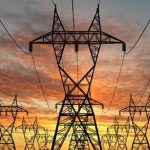What the Midterms Mean for Energy & Environment Policy

Big picture – voters rejected policies that would raise energy costs on consumers when put before them on the ballot last night – the carbon tax initiative in Washington state, renewable energy mandate in Arizona and limits on exploration and drilling in Colorado and Alaska. In Arizona, voters overwhelmingly rejected a 50-percent renewable energy mandate. In Washington, voters rejected placing a proposed fee on carbon emissions for a third time. In Nevada, voters approved a 50-percent renewable energy mandate, but rejected a proposal to deregulate the state’s power market. At a local level – House members who signed on to or flirted with carbon tax legislation lost (Curbelo & Love) or barely hung on (Fitzpatrick). Only Rooney – who focused more on a hyper local issue (nutrient driven algae blooms) managed a decisive victory. With the defeat of Leonard Lance in NJ-7, all 8 Republicans who voted for cap and trade in 2009 have been defeated or retired. Democrats lost three members of the climate caucus and Republicans lost thirteen. The climate caucus recruits in pairs to keep the membership bipartisan. Democrats immediate task is to recruit 10 Republican House members into the caucus to give it balance. With a…








